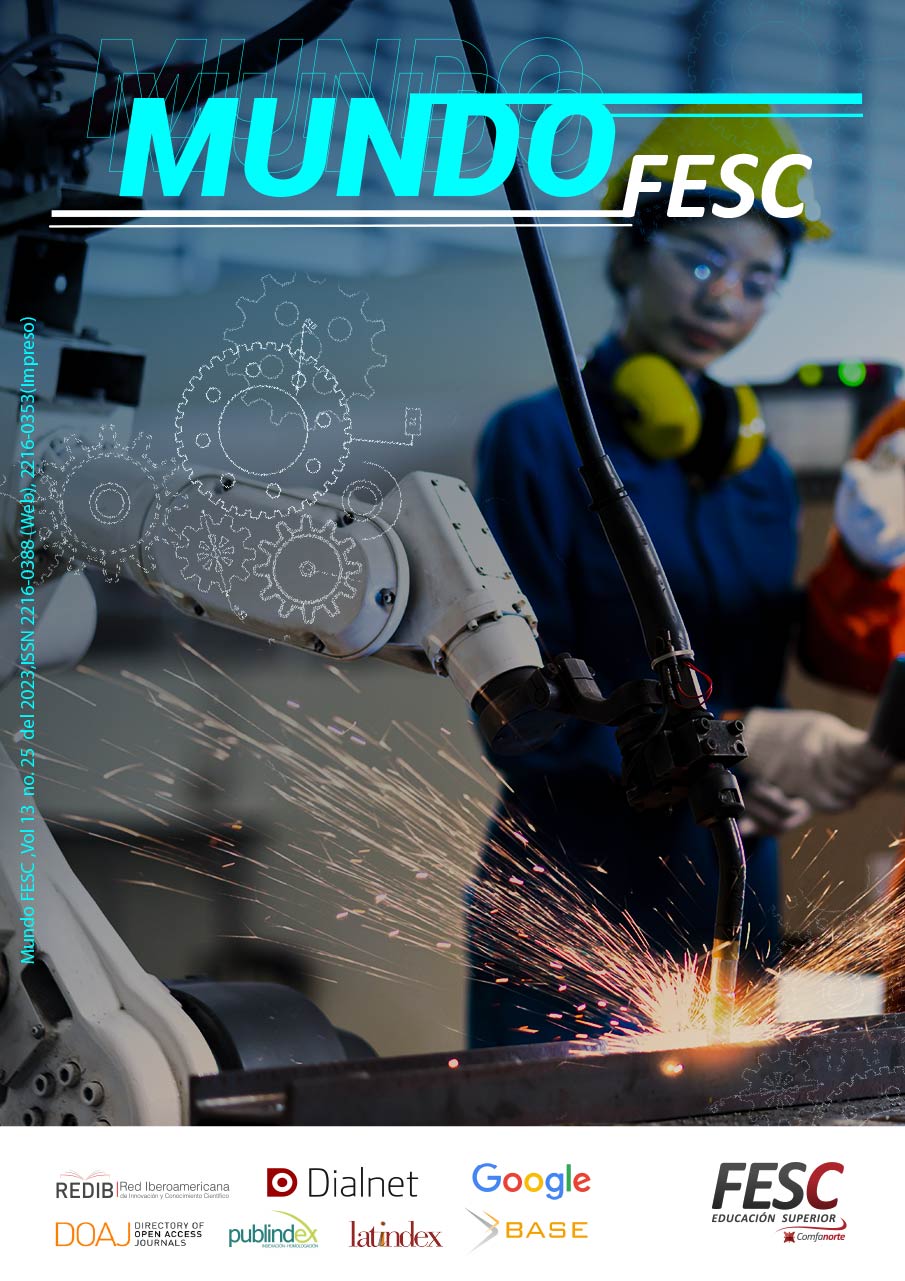Propuesta de un modelo matemático para la optimización de la producción. Una aplicación en la industria ladrillera de San José Cúcuta
DOI:
https://doi.org/10.61799/2216-0388.1419Palabras clave:
Producción, Programación Lineal, Modelo matemático, Análisis de Sensibilidad, OptimizaciónResumen
El sector cerámico del Norte Santandereano buscan satisfacer la creciente demanda de productos de construcción a base de arcilla, para esto se considera el uso de la programación lineal que sirve como apoyo para mejorar la eficiencia operativa en la fabricación de sus productos, encontrando soluciones optimas en los problemas de planificación. Para lograr una producción óptima, se utilizó un modelo matemático de la programación lineal como herramienta clave de optimización. El proceso se inicia con un diagnóstico que implica la observación directa y la recolección de datos a través de herramientas ofimáticas. Posteriormente, se desarrolla un modelo matemático basado en datos reales para evaluar el desempeño del proceso, utilizando indicadores de productividad. Los parámetros del proceso se ajustan para lograr una satisfacción ideal. Finalmente, se realiza un análisis de sensibilidad en varios escenarios para determinar el mejor enfoque de optimización y la aplicación de estos resultados se modelan bajo un simulador de licencia académica FlexSim que nos brinda la oportunidad de adoptar un enfoque global orientado a la mejora, como a la eficiencia en cuanto a la capacidad para satisfacer las necesidades en el sector cerámico. Se logró encontrar un modelo ideal para satisfacer la demanda de la empresa objeto de estudio y posterior a eso se consideró la formulación de un modelo óptimo aprovechando la explotación máxima de una restricción de capacidad y aumentando los recursos de la demanda propuesta por el mercado actual. Se considera que el modelo óptimo le servirá a la empresa como referencia del alcance para conocer que demanda puede lograr explotando su capacidad máxima, sin emplear sobrecostos como emplear nueva maquinaria en línea de producción o adquirir más personal para satisfacer el crecimiento de la demanda.
Descargas
Referencias
J.M Mogrovejo, L.M Bastos y J.A Pabón, “Impacto económico del sector cerámico en San José de Cúcuta (Colombia)”, Universidad & Empresa, vol. 17, no. 29, pp.157-180, 2015, Doi: dx.doi.org/10.12804/rev.univ.empresa.29.2015.07
R. B Chase y F.R Jacobs, Administración de operaciones producción y cadena de suministros, 13a ed. México: McGraw-Hill, 2011
J. Heizer y B. Render, Principios de administración de operaciones, 7a ed. México: Pearson Educación, 2009
H. A Taha, Investigación de operaciones, 9a ed. México: Pearson Educación, 2012
F.S Hillier y G. J Lieberman, Introducción a la investigación de operaciones, 9a ed. México: The McGraw-Hill, 2010.
J.A Córdova, Investigación de operaciones, 1a ed. México: Redes del tercer milenio, 2012
M. Moya, “Planeación de la producción mediante la programación lineal con incertidumbre: uso del programa OR Brainware Decisión Tools2”, Tecnología en Marcha vol. 24, no. 4, pp. 85-95, 2011
S. Handaragama and K. Kusakabe, “Participación de las mujeres en las asociaciones empresariales: un caso de pequeñas empresas turísticas en Sri Lanka,” Heliyon, vol. 7, no. 11, 2021
C. Guedez, “Programación Lineal e ingeniería industrial: una aproximación al estado del arte”, Ingeniería industrial y nuevas tendencias vol. 2, no. 6, pp 61-78, Enero-Junio, 2011
M. Tamayo, “El proceso de la investigación científica”4a ed. México: Limusa Noriega, 2002
J.M Izar, Fundamentos de investigación de operaciones para administración, 1a ed. México: Editorial universitaria Potosina, 1996
C.I Aguilera, “Un enfoque gerencial de la teoría de las restricciones”, Estudios gerenciales, vol. 16, no. 77, pp. 53-69,2000
J. Reyes and C. Molina, “Plan agregado de producción mediante el uso de un algoritmo de programación lineal”, Revista Politécnica, vol. 34, no. 1 , 2014
G. A López, N. A Castro y O. Guerra “Optimización del plan de producción. Estudio de caso carpintería de aluminio”, Revista científica de la universidad de Cienfuegos, vol.9, no. 1, pp. 178-186, 2017
J.A Arango, “Determinación de la mezcla optima de productos para una tejeduría textil” Scientia et Technica, vol. 15, no. 42, pp. 125-130, 2009
Y. F Avila, C. A Marti, Y.A Carvajal, J.E Miño and E. Gonzales, “Experiencias de las aplicaciones de la programación lineal en la industria de procesos químicos en Cuba”, Revista Centro azúcar, vol. 47, no. 4, pp. 90-102, 2020
A. J Caicedo, A. M Criado and K.J Morales, “Modelo matemático para la planeación de la producción en una industria metalmecánica”, Scientia et Technica, vol. 24, no. 3, pp. 408-419, Septiembre 2019
C. E Flores, K.L Flores, “Método simplex de programación lineal aplicado a una empresa distribuidora de mobiliario”, Revista entorno, vol. 71, pp. 22-33, 2021. Doi: https://doi.org/10.5377/entorno.v1i71.14317
Descargas
Publicado
Número
Sección
Licencia
Derechos de autor 2023 Mundo FESC

Esta obra está bajo una licencia internacional Creative Commons Atribución-NoComercial 4.0.






